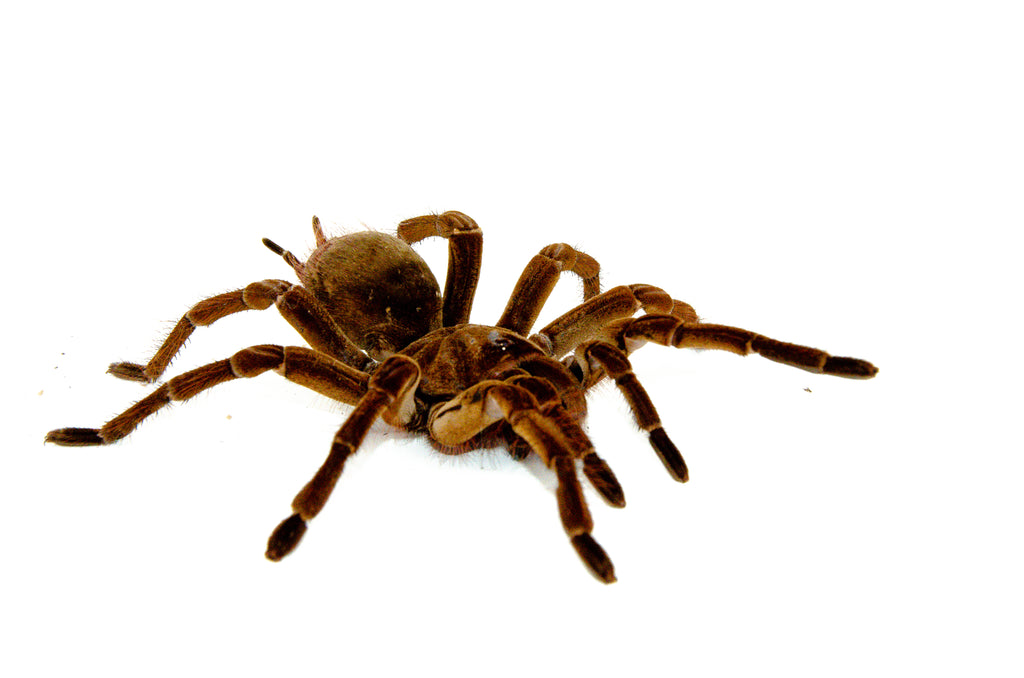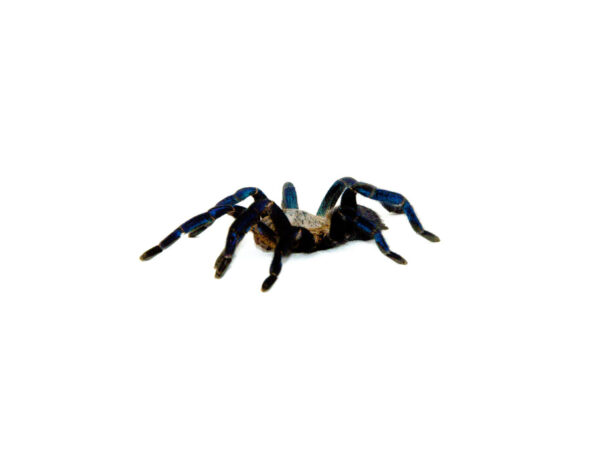oliath Bird Eating Tarantula (Theraphosa stirmi): The World’s Largest Spider
The Goliath Bird Eating Tarantula (Theraphosa stirmi) is among the most awe-inspiring creatures in the tarantula world. Known for its massive size, earthy coloration, and ground-shaking presence, this giant tarantula is native to the rainforests of northern South America. Despite its intimidating name, the Goliath Bird Eating Tarantula rarely feeds on birds and instead preys mostly on insects, small rodents, and amphibians.
Massive Size and Impressive Appearance Goliath Bird Eating Tarantula (Theraphosa stirmi)
One of the main reasons enthusiasts are drawn to the Goliath Bird Eating Tarantula (Theraphosa stirmi) is its colossal size. With a leg span that can reach up to 11 inches and a body length nearing 5 inches, it’s considered one of the largest spiders in the world by mass and size.
Key Physical Features:
-
Leg Span: Up to 11 inches
-
Body Length: Approximately 4.5 to 5 inches
-
Color: Brownish-bronze with reddish setae (hairs)
-
Weight: Can exceed 175 grams
Its thick legs, dense bristles, and formidable fangs make it a commanding presence in any terrarium setup.
Behavior and Temperament Goliath Bird Eating Tarantula (Theraphosa stirmi)
While not particularly aggressive, the Goliath Bird Eating Tarantula is not considered a good pet for handling. This species is defensive and will use its size and urticating hairs to deter threats rather than relying on speed or retreat.
Typical Behaviors:
-
Stridulation (hissing) by rubbing its legs together
-
Flicking urticating hairs when threatened
-
Defensive posturing and occasional biting (rare in captivity)
It’s best admired from a distance, making it a true display species for intermediate or advanced keepers.
Enclosure and Habitat Needs
A large, well-ventilated enclosure is essential for housing a Goliath Bird Eating Tarantula (Theraphosa stirmi). This species is terrestrial and prefers humid, warm environments similar to its native tropical habitat.
Housing Guidelines:
-
Enclosure Size: 20″ x 20″ x 12″ or larger
-
Substrate: 5–6 inches of moist coconut fiber or jungle mix for burrowing
-
Humidity: 80–90%
-
Temperature: 75–82°F
-
Additions: Hideouts like cork bark, a large water dish, and minimal climbing features
Proper humidity and temperature control are critical for the spider’s health and successful molting.
Feeding the Giant
Despite the name, the Goliath Bird Eating Tarantula doesn’t routinely eat birds in captivity. Its diet is primarily composed of large insects and small vertebrates, which it captures with speed and brute force.
Diet Options:
-
Large roaches
-
Superworms
-
Crickets
-
Occasional pinky mice or small amphibians (not regularly)
Feed juveniles 2–3 times a week, while adults can be fed once weekly. Avoid overfeeding to prevent unnecessary stress or obesity.
Growth, Molting, and Lifespan
The Goliath Bird Eating Tarantula (Theraphosa stirmi) grows rapidly, especially during its juvenile phase. Males mature faster but have much shorter lifespans than females.
Life Cycle Info:
-
Female Lifespan: Up to 15–20 years
-
Male Lifespan: 3–6 years
-
Molting: Juveniles molt frequently; adults molt annually or biannually
After molting, the tarantula may appear pale and vulnerable—do not feed it for at least 7–10 days while it hardens.
Special Considerations
Due to its high humidity requirements and sensitivity to poor ventilation, the Goliath Bird Eating Tarantula is best suited for keepers with experience in maintaining tropical species. It’s also a species that may become defensive when disturbed, so limit interactions to enclosure maintenance and observation.
Conclusion
The Goliath Bird Eating Tarantula (Theraphosa stirmi) is a remarkable and formidable species that appeals to advanced tarantula keepers who appreciate size, power, and exotic appeal. Though not ideal for handling, its impressive size and primitive beauty make it a crown jewel in any serious arachnid collection.
From its massive leg span to its gentle, slow movements, this species embodies the primal power of nature. With the right environment and respect for its natural behaviors, the Goliath Bird Eating Tarantula can live a long, healthy life in captivity.









Reviews
There are no reviews yet.